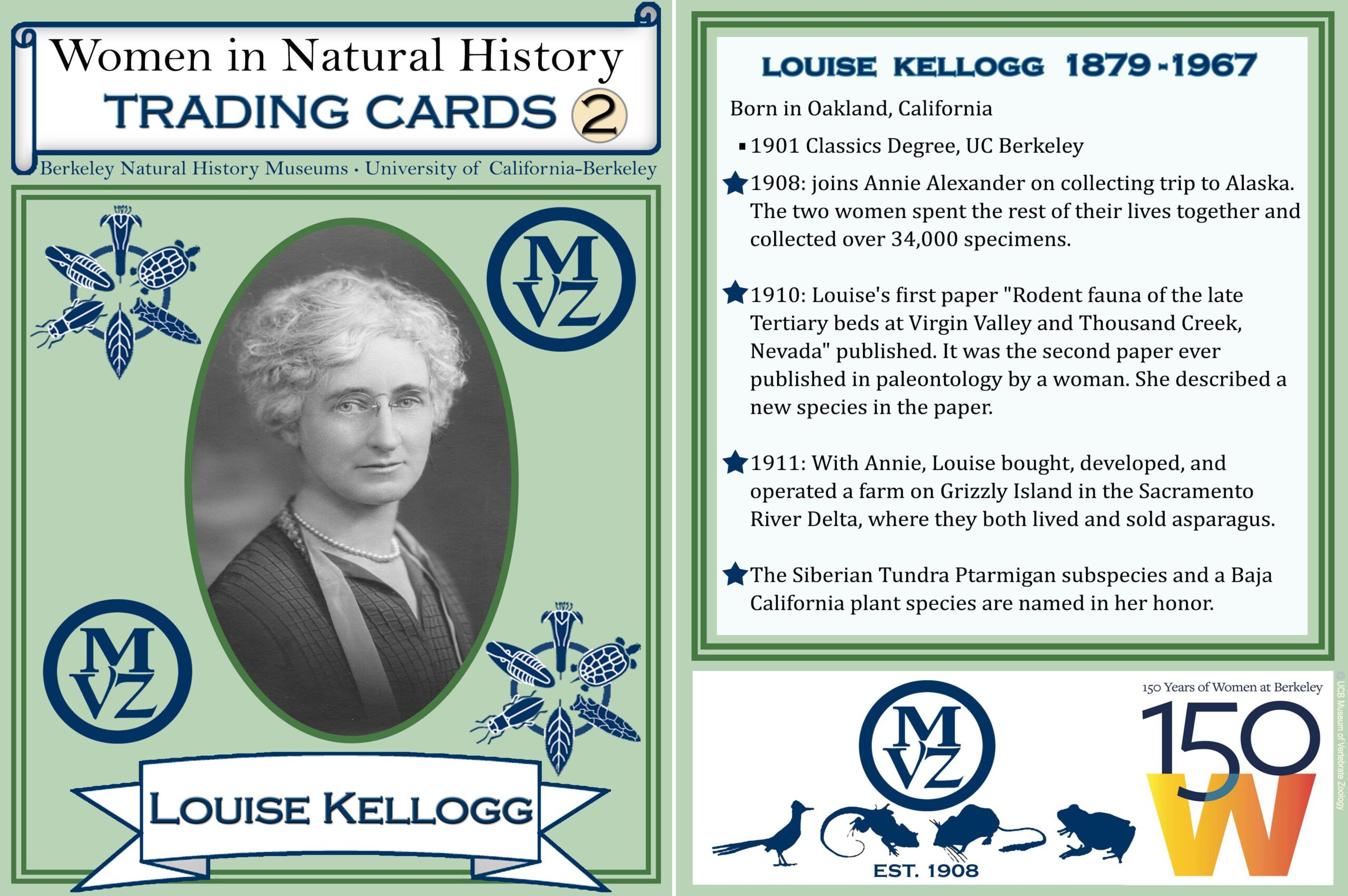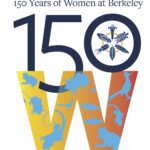Louise Kellogg was born in 1879 in Oakland, California. Her maternal grandfather came West during the California gold rush of 1849. Her father was an avid sportsman and taught Louise to fish and hunt. He also founded the first duck club in California. Louise attended the University of California, Berkeley; after graduating in 1901 with a degree in Classics she taught primary school.
In 1908, Louise’s cousin, and the former university president Martin Kellogg, introduced Louise to UC Berkeley’s newest benefactor Annie Alexander. Annie persuaded Louise to accompany her on an expedition to Alaska under the guise that, “two women (in the field) would attract less attention than one.” Annie and Louise proved to be ideal partners, conducting surveys and collecting birds and mammals. Two years later, Louise gave up her teaching job, and spent the next forty years on collecting expeditions all over the world with her lifelong companion, Annie.
In the fall of 1911, Annie purchased land on Grizzly Island in Suisun Bay, in the Sacramento Delta. Together, Louise and Annie established the Grizzly Island Ranch and became known for their asparagus crop, hay and milking cows. The seasonality of farm life complemented their field work schedule, and allowed them to travel on collecting trips along the West Coast, from Baja California to Alaska. Over the course of their careers, Louise and Annie collected roughly 34,000 species for the Museum of Vertebrate Zoology and other university museums.

On December 26, 1936, Louise and Annie set off from Big Pine, California for the Saline Valley on what became one of their more infamous expeditions. Saline Valley is located in the northern reaches of California’s Mojave Desert and their trip was the museum’s first opportunity to collect specimens and survey the area. Louise and Annie, now experienced field workers in their late 50’s to 60’s, had planned to stay for a week, but shortly after arriving storms blew in and one of the coldest winters on record descended on the area. Annie and Louise were trapped in the snow and their only exit was blocked by fallen rocks. They survived in isolation for weeks, eating beans and cornmeal, while fierce winds tormented the valley. MVZ Director Joseph Grinnell sent MVZ Preparator Ward Russell to arrange for their “rescue” and eventually on January 26, 1937, the roads were cleared and Louise and Annie were free. Despite the harsh conditions, they managed to collect over 95 specimens of birds, gophers, and kangaroo rats to add to the museum’s collections.
In addition to her time in the field, Louise pursued more formal scientific endeavors. In 1910, her first paper “Rodent fauna of the late Tertiary beds at Virgin Valley and Thousand Creek, Nevada” was published and was noted as the second paper in paleontology published by a woman. She was also the first American woman to publish papers in mammalogy. Additionally, the Siberian Tundra Ptarmigan, Lagopus rupestris kelloggae, and a Baja California plant, Senegalia kelloggiana, are named in her honor.
Louise remained with Annie until Annie’s death in 1950. After her death, Louise focused her work on the growing collections they had established at the University’s Herbarium and continued to collect botanical specimens. Louise died in 1967 and in her will she established an endowment to support the work of the botanists at the University’s herbarium.
Cal Day History Displays, Part 1: Snowbound
Gay Bears: The Hidden History of the UC Berkeley Campus
Inventory to the Louise Kellogg Papers at the Museum of Vertebrate Zoology at University of California, Berkeley. MVZA.MSS.0158
Rock Ptarmigan (kelloggae) Lagopus muta kelloggae Grinnell, 1910
Senegalia kelloggiana (A.M.Carter & Rudd) C.E.Glass & Seigler
Stein, Barbara R. Stein, Women in Mammalogy: the Early Years, Journal of Mammalogy, Volume 77, Issue 3, 16 August 1996.
Schweich, Tom. University and Jepson Herbarium, Field Notes of Annie Alexander and Louise Kellogg
Stein, Barbara. On Her Own Terms: Annie Montague Alexander and the Rise of Science in the American West, UC Berkeley Press, 2001.
University Herbarium, Louise Kellogg Profile. Adapted by Staci Markos from Barbara R. Stein, On Her Own Terms: Annie Montague Alexander and the Rise of Science in the American West.



